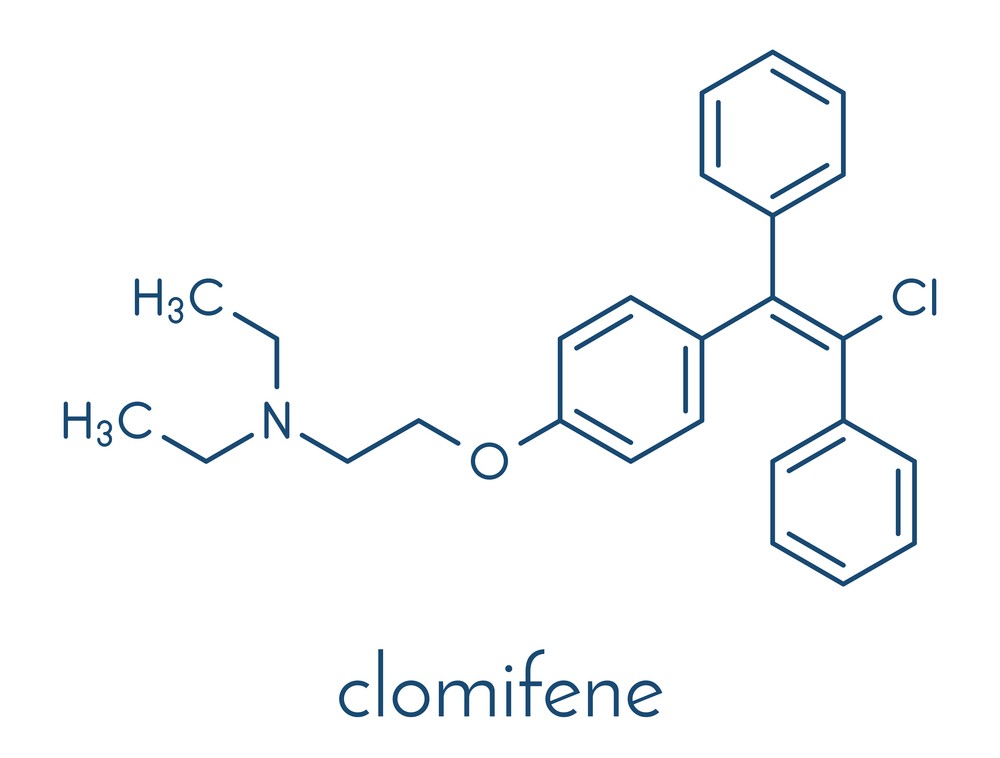Clomiphene citrate, also known as Clomid is a drug commonly prescribed when a woman has difficulty conceiving. It is the most prescribed of all the fertility medications available today. Taken orally, Clomid is generally the first drug doctors turn to when dealing with infertility symptoms in women. Clomid is advised in cases of infertility or subfertility where ovulation is infrequent, very irregular, or does not take place at all. In these symptomatic contexts, Clomid is prescribed to “induce ovulation” for women with ovulatory disorders like anovulation and PCOS.
How does it work?
The hypothalamus in the brain continuously estimates how much oestrogen is in the bloodstream. If a high concentration of oestrogen is present, the hypothalamus decreases its releases of GnRH; if the oestrogen level is diminished, the hypothalamus increases the releases of GnRH. If a woman’s oestrogen levels do not have appropriate variations for some reason, her hypothalamus will not receive the appropriate signals and consequently will fail to function correctly –releasing too little, too much or no GnRH. As a result, her follicles will not receive a signal to develop, and she will fail to ovulate. Clomiphene citrate works here by working as an ‘anti-estrogen’ molecule. When Clomiphene citrate enters the bloodstream, it mimics oestrogen, combines with the oestrogen receptors in the hypothalamus and tricks the hypothalamus into believing that there is no oestrogen present with the result that the hypothalamus responds by releasing GnRH, which then starts a new cycle of ovarian follicle activity.
Clomid tricks the body into producing more and more Follicle Stimulating Hormone (FSH), causing more follicles to grow than normally would. In turn, more estrogen is produced by the follicles, and more eggs are matured.
Typically, a woman taking this drug will produce double or triple the amount of estrogen and will release more eggs at ovulation per cycle compared to pre-treatment cycles.
According to a package insert about Clomid from Merrell Pharmaceuticals Inc., one of the drug’s manufacturers, “The majority of patients who are going to ovulate will do so after the first course of therapy. If ovulation does not occur after three courses of therapy, further treatment with clomiphene citrate tablets USP is not recommended. . . . If menses does not occur after an ovulatory response, the patient should be re-evaluated. Long-term cyclic therapy is not recommended beyond a total of about six cycles.” Merrell Pharmaceuticals also recommends that the first dose of Clomid be 50 mg.
Unfortunately, I know many women who have taken Clomid for as many as twelve cycles; I know others who took the drug at double the dosage recommended by Merrell Pharmaceuticals initially.
Essentially, Clomid hyper-stimulates one aspect of the reproductive system–which then requires the rest of the system (which was perhaps out of sync before the drug was administered) to grasp for health and wholeness in response to the overstimulation.
Studies show that treatments like Clomid and IVF increase a woman’s risk of ovarian cancer (especially if she never conceives)and the risk of birth defects in offspring.
Many women will have side effects when taking Clomid with the adverse effects of clomiphene brought on by its anti-estrogenic properties. (psychological/emotional side effects such as mood swings and irritability, hot flashes, visual disturbances, ovarian cyst formation, etc)
I observe two major problems commonly associated with Clomid use, which directly affect the chance of conception.
- Hostile or absent cervical mucus
Fertile cervical mucus is of paramount importance in reproduction. Sperms are rapidly killed in the vagina and need to get into “good” cervical mucus so that they can survive and swim up into the tubes for a chance of fertilization with an egg. It is believed that fertility is lower when cervical mucus production is significantly reduced. Clomid causes a decrease in the volume of cervical mucus or the production of hostile cervical mucus, which makes it difficult for sperm to easily reach the mature egg. Women taking Clomid have increased vaginal dryness – again, subverting fertility and causing discomfort during sex.
- Thinning of the uterine endometrial lining
During a normal menstrual cycle, estrogen works to thicken the uterine lining to prepare for implantation of the fertilized embryo. Some women will have a thin uterine lining (endometrium) during Clomid treatment cycles. Because Clomid is anti-estrogenic it often prevents the full developmental thickening process from occurring. Generally, an endometrial thickness 8+mm is preferable. In Clomid cycles, however, the lining often does not reach a thickness greater than 6 to 7 mm which inhibits implantation and the development of the embryo.





